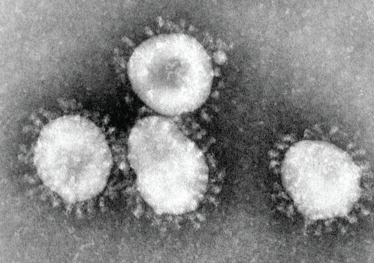What’s Up With Bats?
Viruses that originate in bats – such as the 2019 novel coronavirus – exhibit unusual virulence… but why?
Like its predecessors – SARS, MERS, and Ebola – the 2019 novel coronavirus has been making headlines for its high transmissibility and climbing body count. Although COVID-19 may not yet spark the same degree of alarm as those viruses, it does have one thing in common with them: its chiropteran origins.
In an effort to understand why zoonotic viruses that originate in bats are so dangerous when transmitted to humans, researchers from the University of California, Berkeley, studied virus infectivity in bat cell lines (1). Their findings? Bats have highly robust antiviral defenses – a phenomenon that prevents pathogens from damaging cells. In response, bat viruses often develop rapid replication and transmission so that they can mount an attack before the bat’s defenses can be raised. “The bottom line is that bats are potentially special when it comes to hosting viruses,” said study author Mike Boots in a recent press release (2). “It is not random that a lot of these viruses are coming from bats. Bats are not even that closely related to us, so we would not expect them to host many human viruses. But this work demonstrates how bat immune systems could drive the virulence that overcomes this.” Additionally, thanks to the need to protect their tissues from high metabolisms and extreme levels of physical activity, bats exhibit an anti-inflammatory response that can protect them from their own defense mechanisms.
When powerful bat viruses enter another organism – for example, a human – that lacks these unique protective mechanisms, the result can be catastrophic. Worse yet, the more a bat’s habitat is disturbed, the more likely it is to shed viral particles that can be transmitted to other organisms. The lesson? Understanding the transmission of viruses from bats to humans can help us predict and prevent outbreaks – and protecting bats’ environments means protecting ourselves.


- CE Brook et al., eLife, [Epub ahead of print] (2020). PMID: 32011232.
- R Sanders (2020). Available at: bit.ly/380h9Ri.

While obtaining degrees in biology from the University of Alberta and biochemistry from Penn State College of Medicine, I worked as a freelance science and medical writer. I was able to hone my skills in research, presentation and scientific writing by assembling grants and journal articles, speaking at international conferences, and consulting on topics ranging from medical education to comic book science. As much as I’ve enjoyed designing new bacteria and plausible superheroes, though, I’m more pleased than ever to be at Texere, using my writing and editing skills to create great content for a professional audience.




















